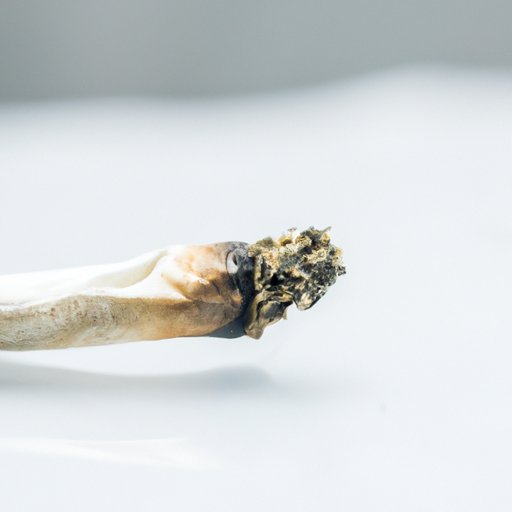
Introduction
With the legalization of marijuana in many parts of the world, it’s become more mainstream to talk about the effects of smoking marijuana. However, one aspect that’s often overlooked is the impact it has on non-smokers who are exposed to second-hand marijuana smoke. In this article, we’ll explore the science behind second-hand high, the risks it poses to non-smokers, and what can be done to avoid it.
The Science Behind Second Hand High
Second-hand high refers to a condition wherein non-smokers experience psychoactive effects as a result of inhaling marijuana smoke. The THC (tetrahydrocannabinol) compounds in marijuana are transmitted through second-hand smoke, which means that non-smokers can absorb them through their lungs and bloodstream.
One study found that second-hand marijuana smoke can contain up to 69% of the THC levels found in the direct smoke exhaled by the user. Inhalation of second-hand smoke can lead to the same effects as those experienced by the smoker, albeit in milder forms. The impact on non-smokers can vary depending on several factors.
The combustion of marijuana triggers the creation of toxic byproducts that can lead to respiratory tract irritation, asthma, bronchitis, and other lung-related issues. The carbon monoxide present in the smoke can lead to cardiovascular problems in non-smokers, similar to that experienced by smokers.
The Risks of Second Hand High to Non-Smokers
It’s essential to recognize the potential risks of second-hand high, especially for non-smokers. People who experience second-hand high might become dizzy or disoriented, alter their sense of time, or feel slower reflexes in performing tasks.
Second-hand marijuana smoke can also impact cognitive function and mental states. The experience can cause temporary memory loss, paranoia, and anxiety. The long-term use of marijuana, which includes frequent exposure to smoke, could increase the risk of psychosis and possibly schizophrenia.
Furthermore, non-smokers who are exposed to second-hand smoke can experience more severe effects. The Journal of the American Medical Association found that the smoke from a single joint could cause as much damage to the blood vessels and heart as tobacco smoke. The smoke could also lead to severe respiratory problems, particularly in infants, children, and pregnant women.
How to Avoid Second Hand High
It’s important to take reasonable steps to minimize exposure to second-hand marijuana smoke. For instance:
- Avoid visiting places that permit smoking marijuana indoors.
- If you’re in a space where marijuana is being consumed by others, opt for sitting further away from them or stepping outside.
- Keep an air purifier running at all times in enclosed spaces as it can help neutralize airborne THC compounds.
- Open windows and ensure proper ventilation in the area to reduce exposure to smoke.
- Use protective gear, such as masks or respirators, when necessary to prevent inhalation of harmful smoke.
While it’s not practical to control every aspect of your environment, the steps above can help to reduce the risk of experiencing a second-hand high.
Second Hand High and the Legal Implications
The laws surrounding second-hand high can vary depending on where you are. Most states or districts that permit the use of marijuana have laws to ensure less exposure to second-hand smoke. However, no state or country has laws against smoking marijuana in private places such as homes, even if children or non-smokers are present.
At the same time, it is possible to take legal action if second-hand smoking occurs without your consent. Victims of second-hand smoke can sue for damages and medical expenses. In some cases, the responsible party might face jail time or hefty fines.
Sharing Experiences
The stories of people who have accidentally experienced a second-hand high are often interesting to hear. Some individuals complain about feeling woozy, while others describe altered perceptions of time and space.
While it’s difficult to avoid all exposure to secondhand smoke, sharing experiences involving the impact of marijuana on non-smokers can help others to avoid a similar experience. Emphasizing the potential risks can encourage individuals to be more aware of their surroundings and take practical steps to avoid exposure.
Conclusion
While marijuana has beneficial effects for those who use it medically, non-smokers exposed to second-hand smoke face multiple risks. The impact on mental, cognitive, and physical health is a significant concern, particularly for children and pregnant women. As we’ve seen in this article, being diligent and informed with your decisions is critical to avoid the risks of second-hand high. By taking practical steps to avoid exposure, we can protect ourselves and those around us and come to a better understanding of the impact of second-hand marijuana smoke.





